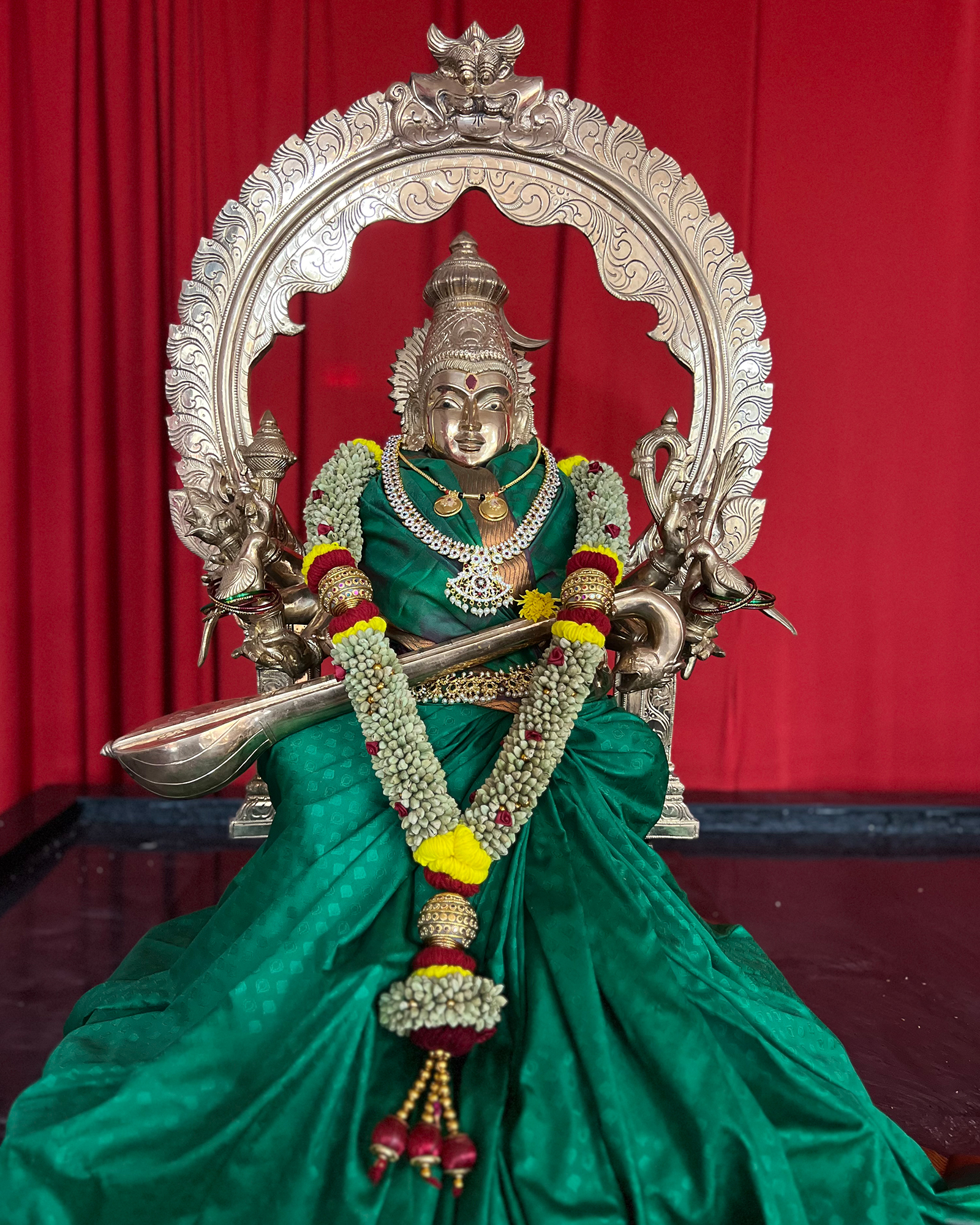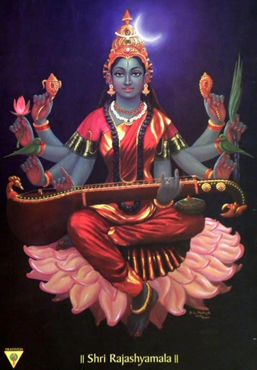
Sri Rajashyamala Devi

Birth Thithi:
Vaisakha Shukla Trutheeya (April – May Waxing Phase 3rd day)
Origin Details:
During ancient times, sage Mātaṅga did severe penance for divine mother to be born as his daughter. Divine mother blessed sage Mātaṅga with a beautiful girl in the form of Shyamala (dark & attractive hue). Rajyashyamala Jayanti is believed to be the day when goddess Shakthi was born to sage Mātaṅga. Hence she is also called Mātaṅgī. Her Jayanti is observed on the 3rd day(Trutheeya) of the Shukla Paksha or waxing phase of the moon in the month of Vaishakha (Gregorian equivalent: May-June).
Mātaṅgī is also the ninth of 10 great vidyās. Mātaṅgī is greenish in color, dark in complexion (thus another of her names, Śyāmalā), and luscious in shape.“Mātaṅgī is the mantriṇi (minister) of Lalitā devi. Per puranas, Sri Lalitha devi gave her Royal seal to Mātaṅgī devi during war with Bhandasura.
Meenaksshi devi of Madurai is also considered to be the form of Sri Raja Shyamala devi. It is believed that Sri Kalidaasa turned into a great poet & upasaka with blessings of Sri Raja Shyamala devi. After her blessing, he spontaneously narrated Sri Shyamala Dandakam which is a very beautiful hymn giving details of Shyamala devi. She is also seen in dark royal blue hue enjoying blissful music. She is called Sangeetha Matruka & is associated with music & fine arts. Lord Sri Krishna & Shyamala devi are said to be associated with each other as the same divinity but in different forms.
She is worshiped during Magha month (February) for nine nights of waxing moon phase. She is worshiped as – Laghu shyama, Vagvadini, Nakuleeshwari, Kalyana shyama, Jagadranjani mathangi, Vashya mathangi, Sarika, Shuka shyama & Raja shyama.
According to myths and legends, Goddess Matangi is said to have tribal origins. Thus she is closely associated with birds, forests, wilderness and hunting
Devata Significance:

She is the Goddess of the spoken word as well as outward articulation of inner knowledge, including all forms of art, music and dance. She instills in the heart of the Sadhaka the faith that all existence is pervaded by the goddess and there is nothing that is outside the goddess
She challenges the normally accepted concepts and values in an established social order. She brings into question the very notions of beauty, goodness, honor, respect, decency, cleanliness and physical comfort etc. Caste, creed and color are no bar to her upāsanā—Mātaṅgī leads one to cut through all such barriers. She is ākarṣaṇa (attraction) and vaśya (influence) pradhāna devatā.
Special Days for Pooja:
- Vaishakka Shukla Trutheeya (Feb Waxing Phase 3rd day)
- Shukla paksha Ashtami (Waxing phase 8th day)
- Magha navaratri (nine nights of waxing moon phase)
Key benefits Worshiping:
- Worshiping her bestows knowledge, intellect & good speech
- Her upasana makes one shine in fine arts like music etc
- She grants her devotees with power of influence.
- Shyamala devi also protects from evil energies.
Shyamala Dhyanam:
Manikya Veenam Upalalayanthim Madhalasam Manjula Vag Vilasam |
Mahendra Niladhyuthi Komalangim Mathanga Kanya Manasa Smaramim ||
Translation:
Raja-Shyamala, dark with blue as the cloud filled with water is seated on the gem-studded throne, listens to the sweet utterances of the parrot, is aglow with youth, has one foot on the lotus, has her forehead bedecked with the crescent moon, plays on the veena, has garland of jasmine flowers, wears red garments, has conch-vessel. Matangi, lustrous like sapphires in her self-glory plays the ruby bejeweled veena.